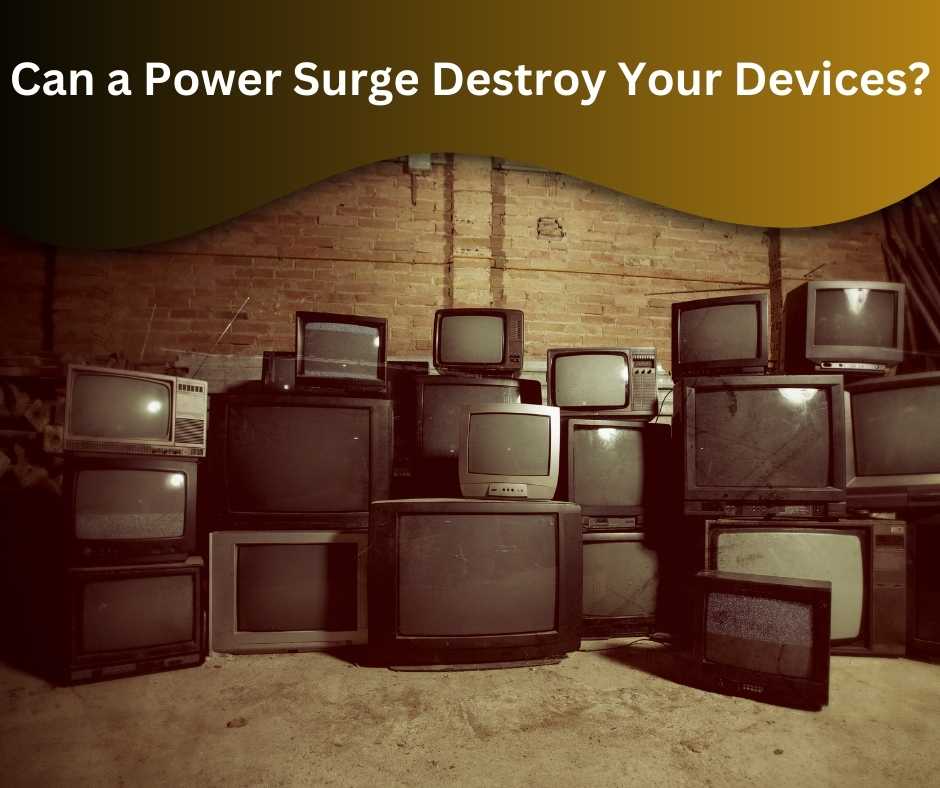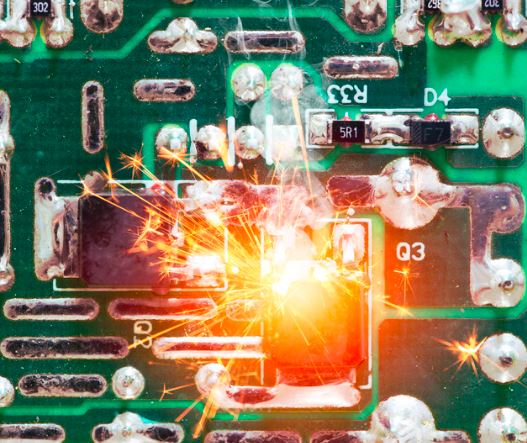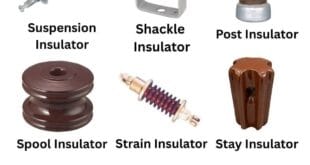Can a Power Surge Destroy Your Devices? Everything You Need to Know
Have you ever experienced flickering lights during a storm or watched in horror as your electronics suddenly shut down? That sudden loss of power may be the result of a power surge, and if you’re not careful, it could lead to your expensive devices being permanently damaged. In this article, we’ll explore the risks associated with power surges, how they can destroy your electronics, and, most importantly, what you can do to protect your home and devices.

What Is a Power Surge?
A power surge is a sudden and brief spike in electrical voltage that exceeds the standard flow of electricity in your home. In the U.S., most homes operate at around 120 volts. When a surge happens, the voltage spikes above this level, which can overload and damage the circuits of electrical devices connected to the system. Power surges can last less than a second, but the damage they cause can be costly and irreparable.

Common Causes of Power Surges
Power surges can be caused by a variety of factors. Understanding the common sources can help you prepare and take preventive measures.
1. Lightning Strikes
One of the most dramatic causes of power surges is lightning. A single lightning strike can send millions of volts of electricity into the power grid, causing widespread surges that affect homes miles away from the actual strike. While lightning-related surges are rare, they can cause catastrophic damage to your electronics if your home is unprotected.
2. Electrical Overloads
An overload occurs when too many devices are plugged into a single circuit, drawing more electricity than the circuit is designed to handle. This excessive demand can cause voltage fluctuations and lead to surges. For example, if you have several high-power appliances running on the same outlet, such as air conditioners and microwaves, you might overload the circuit and cause a power surge.
3. Faulty Wiring
Wiring issues within your home can also lead to power surges. If the wiring is old, damaged, or improperly installed, it may not be able to handle the electrical load, leading to unpredictable surges. Faulty wiring can also increase the risk of electrical fires, so addressing this issue is essential for safety as well as surge prevention.
4. Power Restoration After Outages
After a power outage, the sudden restoration of electricity can cause a surge. When the power grid is restored, a rush of electrical energy flows into homes and businesses. If your home is not adequately protected, this sudden influx of power can overwhelm your devices, leading to permanent damage.
How Power Surges Damage Your Devices
So, how exactly does a power surge harm your expensive electronics? To understand this, we need to look at the internal workings of your devices. Most electronic devices contain delicate circuitry, microprocessors, and transistors that are designed to handle a specific voltage range.
When a surge occurs, the excess voltage can cause several types of damage:
1. Fried Circuit Boards
One of the most common types of damage caused by power surges is the frying of circuit boards. The delicate components on these boards can’t handle the excessive voltage, leading to short circuits, melted connections, and ultimately a total failure of the device.
2. Destroyed Power Supplies
The power supply unit (PSU) in devices like computers and TVs is particularly vulnerable to power surges. The PSU regulates the flow of electricity into the device. When a surge hits, the PSU can be overwhelmed, leading to blown capacitors, melted components, or a complete shutdown of the device.
3. Corrupted Data in Computers
In addition to physical damage, power surges can cause data corruption. If your computer or external storage devices are affected during a surge, you may lose important files or find that your operating system is no longer functional.
4. Cumulative Damage
Not all surges cause immediate, noticeable damage. In fact, smaller, more frequent surges may cause cumulative damage over time. Each surge slowly degrades the internal components of your electronics, reducing their lifespan and causing them to fail earlier than expected.
How to Protect Your Devices from Power Surges
The good news is that power surges don’t have to be a death sentence for your electronics. By taking a few precautionary steps, you can significantly reduce the risk of damage. Here’s how:
1. Use Surge Protectors
Surge protectors are one of the simplest and most effective ways to safeguard your devices. They act as a buffer between your electronics and the power outlet. If a surge occurs, the surge protector absorbs the excess energy and diverts it away from your devices.
When choosing a surge protector, consider the following:
- Joule Rating: This measures how much energy the surge protector can absorb before it fails. The higher the joule rating, the better the protection.
- Clamping Voltage: This is the voltage level at which the surge protector will start to divert excess electricity. A lower clamping voltage provides better protection.
- Response Time: This indicates how quickly the surge protector reacts to a surge. Faster response times offer better protection.
It’s also important to note that surge protectors wear out over time. If you’ve experienced several surges, it’s a good idea to replace your surge protectors periodically to ensure they’re still effective.
2. Whole-Home Surge Protection
For maximum protection, consider installing a whole-home surge protection system. Unlike individual surge protectors, which protect specific devices, a whole-home system is installed at your electrical panel and shields your entire home from surges.
Whole-home surge protectors are particularly effective against external surges caused by lightning strikes and power grid issues. While the initial cost may be higher, this solution provides comprehensive protection and peace of mind.
3. Unplug Devices During Storms
During severe storms, the safest option is to unplug your electronics altogether. While surge protectors can offer a degree of protection, unplugging ensures that your devices won’t be affected by a large surge. This is particularly important for high-value electronics like TVs, computers, and gaming consoles.
4. Use Uninterruptible Power Supplies (UPS)
An uninterruptible power supply (UPS) is another valuable tool for protecting sensitive electronics. A UPS acts as a backup battery that provides temporary power to your devices in the event of a surge or outage. This is especially useful for computers and home office equipment, as it allows you to save your work and shut down your devices safely during a surge.
Frequently Asked Questions (FAQs) about Power Surges
Many people have questions about power surges and how to protect their electronics. Here are some of the most commonly asked questions, along with answers:
Q: Can a power surge really fry expensive devices like TVs and computers?
A: Yes, power surges can cause irreparable damage to expensive electronics like TVs, computers, and gaming consoles. When the voltage spike overwhelms the device’s circuitry, it can lead to short circuits, fried components, and even complete system failure.
Q: What is the best way to protect my devices from a surge?
A: The best way to protect your devices is to use a combination of surge protectors and whole-home surge protection. For smaller devices like computers and TVs, a high-quality surge protector with a high joule rating is essential. For larger appliances, consider installing a whole-home surge protector for maximum coverage.
Q: Can a small surge cause damage over time?
A: Yes, even small surges can cause damage to your devices over time. While a single small surge may not cause immediate failure, repeated surges can slowly degrade the internal components of your electronics, reducing their lifespan and increasing the risk of failure in the future.
Q: What should I do if a power surge has already damaged my devices?
A: Unfortunately, if a power surge has already damaged your devices, they may be beyond repair. In many cases, the internal components, such as circuit boards or power supplies, are fried and cannot be fixed. However, this serves as a reminder to invest in surge protectors to prevent future damage.
Q: Are all surge protectors the same?
A: No, surge protectors vary in quality and effectiveness. When choosing a surge protector, look for one with a high joule rating (which measures its capacity to absorb energy), a low clamping voltage (which indicates when it will start diverting excess power), and a fast response time (how quickly it reacts to surges). These factors will determine the level of protection it offers.
Recommended Products for Surge Protection
To help you protect your electronics from power surges, here are some recommended products:
- Belkin Surge Protector Power Strip – With 12 outlets and a high joule rating, this surge protector is perfect for home entertainment systems and computer setups.
- APC Battery Backup & Surge Protector – This UPS provides backup power during surges and outages, ensuring that your sensitive electronics remain protected.
- Siemens FS140 Whole House Surge Protector – For comprehensive protection, this whole-home surge protector guards your entire electrical system from surges.
Conclusion: Take Action Before It’s Too Late
Power surges are an inevitable part of modern life, but they don’t have to be a threat to your electronics. By understanding the causes and effects of surges and taking proactive steps to protect your devices, you can avoid costly repairs and replacements.
If you’ve ever experienced the frustration of losing a device to a power surge, don’t wait until it happens again. Invest in surge protectors, consider whole-home protection, and stay vigilant during storms to keep your electronics safe.
 Electrical Engineering World Wiring a Brighter Tomorrow!
Electrical Engineering World Wiring a Brighter Tomorrow!


